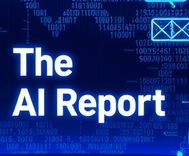What is artificial intelligence’s greatest risk?

The AI Report
Daily AI, ML, LLM and agents news
The global conversation around Artificial Intelligence is reaching a fever pitch, with luminaries like Geoffrey Hinton warning of AI's potential to surpass human intelligence and threaten our very survival. Scientists and policymakers across continents nod in solemn agreement, acknowledging the immense, shared risks. Yet, beneath this veneer of consensus lies a profound paradox: despite shared fears, genuine international cooperation on AI governance remains elusive. Why does the specter of existential threat fail to unite humanity?
The answer, unsettlingly, is that defining AI risk has itself become a new battleground for international competition and strategic advantage.
The Elusive Nature of AI Risk
Unlike nuclear weapons, with their stark, objective dangers like blast yield and radiation, or climate change, which offers measurable indicators and a scientific consensus, AI presents a blank canvas. No one can definitively state whether its greatest risk is mass unemployment, algorithmic discrimination, superintelligent takeover, or something we haven't even conceived. This inherent uncertainty transforms AI risk assessment from a purely scientific endeavor into a strategic game.
National Agendas Shape Risk Narratives
Nations adeptly craft risk narratives that serve their strategic interests. The United States, home to many leading AI developers, emphasizes "existential risks" stemming from "frontier models." This framing places American tech giants at the forefront, portraying them as both the source of advanced AI capabilities and indispensable partners in its control. Europe, leveraging its expertise in data protection, focuses on "ethics" and "trustworthy AI," extending its regulatory prowess into the digital frontier.
China, conversely, advocates that "AI safety is a global public good," arguing that risk governance should not be monopolized by a few but serve humanity's common interests. This narrative challenges Western dominance and calls for a multipolar approach to governance.
Corporate Strategies and Expert Voices
Corporate actors are equally skilled at shaping the discussion. Companies like OpenAI highlight "alignment with human goals," reflecting their specific research strengths. Anthropic champions "constitutional AI" in domains where it possesses specialized expertise. Other firms strategically select safety benchmarks that favor their own technologies, subtly suggesting competitors pose greater risks by failing to meet these self-defined standards.
Beyond nations and corporations, various professional communities — computer scientists, philosophers, economists — contribute to this landscape. Each group defines value through its own narrative, warning of technical catastrophes, moral hazards, or predicting labor market upheavals.
When Problem Definition Becomes Power
The traditional causal chain of safety — identify risks, then develop solutions — has been inverted for AI. We now often construct risk narratives first, then deduce the technical threats; we design governance frameworks, then define the problems these frameworks are meant to solve. Defining the problem isn't just an epistemological exercise; it's a profound act of power. How we define "artificial general intelligence," what constitutes "unacceptable risk," or what "responsible AI" truly means directly shapes future technological trajectories, industrial competitive advantages, international market structures, and even the global order itself.
Navigating This Evolving Landscape
Understanding this dynamic is crucial for effective engagement, not a reason for despair. AI safety cooperation is not doomed to empty rhetoric; it simply demands a more sophisticated approach.
For Policymakers
Advance your agenda in international negotiations by first understanding the genuine concerns and legitimate interests driving others' risk perceptions. Acknowledge that the construction of risk doesn't negate reality; robust technical research, practical safeguards, and contingency mechanisms remain indispensable, regardless of how risks are framed.
For Businesses
Embrace a multi-stakeholder perspective when shaping technical standards. True competitive advantage arises from unique strengths rooted in local innovation ecosystems, not from opportunistic positioning. Collaborative standard-setting can mitigate broader risks and foster long-term trust.
For the Public
Develop "risk immunity." Learn to discern the interest structures and power relations embedded within different AI risk narratives. Avoid being paralyzed by doomsday prophecies or uncritically seduced by technological utopias. Engage critically and demand transparency.
Evolving Global Governance Through Competitive Laboratories
International cooperation remains vital, but its nature must evolve. Instead of pursuing a single, unified AI risk governance framework — which is neither achievable nor necessary — we should embrace the plurality of risk perceptions. The world needs "competitive governance laboratories" where different models can prove their worth in practice. This polycentric governance, though seemingly loose, can achieve higher-order coordination through mutual learning, adaptation, and inherent checks and balances.
AI isn't just a technology; it's reshaping the very meaning of governance. The ongoing competition to define AI risk is not a failure of global governance, but rather its necessary evolution: a collective, iterative learning process for confronting the profound uncertainties of this transformative era. Engaging with this complexity, rather than seeking a simplistic consensus, will define our path forward.

The AI Report
Author bio: Daily AI, ML, LLM and agents news
